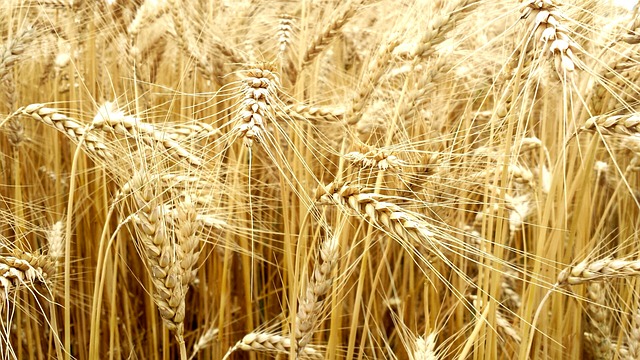by Brenda Davis, RD
Whole grains (also called cereals) are small, hard, dry seeds that grow on grass-like plants. They are  staples for most populations around the world. The most widely consumed grains are wheat, rice and corn (botanically, corn is a grain, but from a culinary sense, it tends to be used as a starchy vegetable). Other popular grains are barley, rye, oats, kamut, spelt and millet. Pseudograins, such as amaranth, buckwheat, quinoa and wild rice, are similar to grains in both
staples for most populations around the world. The most widely consumed grains are wheat, rice and corn (botanically, corn is a grain, but from a culinary sense, it tends to be used as a starchy vegetable). Other popular grains are barley, rye, oats, kamut, spelt and millet. Pseudograins, such as amaranth, buckwheat, quinoa and wild rice, are similar to grains in both
their nutrition and culinary uses, but they are not in the same botanical family.
Are whole grains healthy foods? Absolutely. Whole grains provide about half of the world’s protein and fiber. They are rich sources of B vitamins (especially thiamin and niacin) and vitamin E. They are also good sources of minerals, including manganese, selenium, magnesium, phosphorus, iron, zinc and copper. Whole grains contain a variety of phytochemicals and antioxidants.
Are some whole grains healthier than others? Yes, there are several considerations when trying to select the healthiest whole grains:
1. Type of grain. Like all foods, there are variations in the nutritional value of different grains. Pseudograins tend to be slightly higher in protein and minerals than true grains. Of the true grains, oats, wheat, kamut and spelt are the richest in protein. Whole grain rice is higher in vitamin E than most other grains; kamut is higher in selenium; oats are higher in manganese and copper; spelt is higher in zinc; rye is higher in potassium; wheat is higher in magnesium; and wheat and oats are higher in iron. Eat a variety of
whole grains to ensure maximum benefits.
2. Color of grain. The more colorful whole grains generally contain more antioxidants and phytochemicals. For example, red or black quinoa or rice contain more phytochemicals than beige quinoa or brown rice.
3. Processing of grain. We use whole grains to make many popular food products, such as bread, pasta, ready-to-eat breakfast cereals, crackers, cookies and snack foods. Generally, the more heavily processed the grain, the lower the nutritional value and the higher the glycemic index (a measure of how much a food affects your blood sugar after eating). The most nutritious whole grains are called “intact whole grains” (e.g., barley;
kamut; spelt and wheat berries; quinoa; wild rice; brown, red or black rice; buckwheat, etc.). Sprouting these grains further increases nutrients and phytochemicals, reduces anti-nutrients and releases stored forms of nutrients. Cut grains (e.g., steel-cut oats, 12-grain cereals, bulgur, etc.) are also healthful choices, as they are minimally processed and generally contain no additives, such as sugar, fat and salt. Rolled grains (rolled oats,
rolled barley, etc.) are also nutritious but are more quickly absorbed into the bloodstream than intact or cut grains. Shredded grains are also acceptable choices. Ground grains (e.g., whole-wheat flour, oat flour, etc.) should be used less often and in moderate amounts, as foods made with flours tend to contain more additives and are much more quickly absorbed. Flaked and puffed whole grains are more heavily processed and are best minimized. The whole-grain hierarchy below summarizes the least-to-most healthful whole grains.
The Whole-Grain Hierarchy
- Intact Whole Grains (e.g., quinoa, barley)
- Cut Whole Grains (e.g., steel-cut oats)
- Rolled Whole Grains (e.g., rolled oats)
- Shredded Whole Grains (e.g., shredded wheat)
- Ground Whole Grains (e.g., whole-wheat flour)
- Flaked Whole Grains (e.g., kamut flakes)
- Puffed Whole Grains (e.g., puffed wheat)
Frequently Asked Questions
Why are refined grains less healthful? When grains are refined, most of the fiber, vitamins, minerals and phytochemicals are lost. For example, when we turn wheat into white flour, we lose about 80 to 90 percent of the fiber, 70 to 80 percent of the vitamins and minerals, and 90 percent of the phytochemicals. For optimal health, we want to avoid or minimize the use of refined grains (e.g., white flour, white rice, couscous, white pasta, etc.).
What type of bread is most healthful? Bread is a very popular food around the world. Sprouted breads (bread made from sprouted grains and dehydrated or cooked at a low temperature), such as manna breads, are an excellent choice. Breads made from sprouted grain flours are preferable to regular flour breads but still can be quite light and fluffy. Generally, the denser the bread, the more slowly it is absorbed, and the more healthful it is. Breads containing intact grains, nuts and seeds are better choices. Very heavy breads (e.g., breads you can practically stand on) are best. Sourdough bread is less likely to cause food intolerance, and despite its significant carbohydrate content, sourdough bread is considered a low-glycemic-index food; it will likely cause a gradual increase in blood sugar levels rather than a spike.
Brenda Davis is a registered dietitian who is a leader in her field. She is also an internationally acclaimed speaker who has been featured at international nutrition, medical and health conferences in more than a dozen countries. In 2007, she was inducted into the Vegetarian Hall of Fame. She will be speaking at The Real Truth About Health Conference, which will be held Feb. 2-11, 2018, at the Long Island Hilton, in Melville (RealTruthTalks.com).





